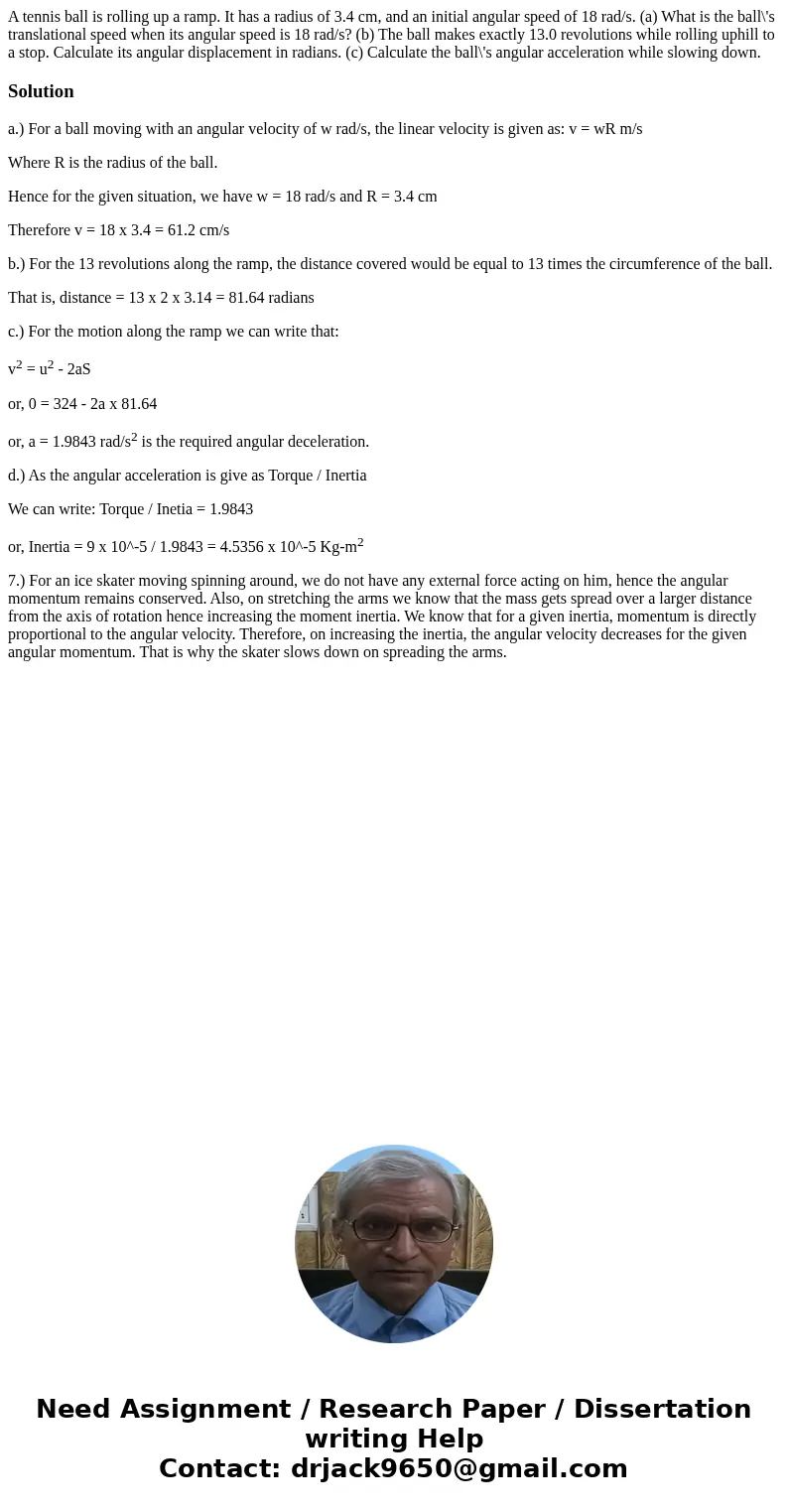A tennis ball is rolling up a ramp It has a radius of 34 cm
Solution
a.) For a ball moving with an angular velocity of w rad/s, the linear velocity is given as: v = wR m/s
Where R is the radius of the ball.
Hence for the given situation, we have w = 18 rad/s and R = 3.4 cm
Therefore v = 18 x 3.4 = 61.2 cm/s
b.) For the 13 revolutions along the ramp, the distance covered would be equal to 13 times the circumference of the ball.
That is, distance = 13 x 2 x 3.14 = 81.64 radians
c.) For the motion along the ramp we can write that:
v2 = u2 - 2aS
or, 0 = 324 - 2a x 81.64
or, a = 1.9843 rad/s2 is the required angular deceleration.
d.) As the angular acceleration is give as Torque / Inertia
We can write: Torque / Inetia = 1.9843
or, Inertia = 9 x 10^-5 / 1.9843 = 4.5356 x 10^-5 Kg-m2
7.) For an ice skater moving spinning around, we do not have any external force acting on him, hence the angular momentum remains conserved. Also, on stretching the arms we know that the mass gets spread over a larger distance from the axis of rotation hence increasing the moment inertia. We know that for a given inertia, momentum is directly proportional to the angular velocity. Therefore, on increasing the inertia, the angular velocity decreases for the given angular momentum. That is why the skater slows down on spreading the arms.

 Homework Sourse
Homework Sourse